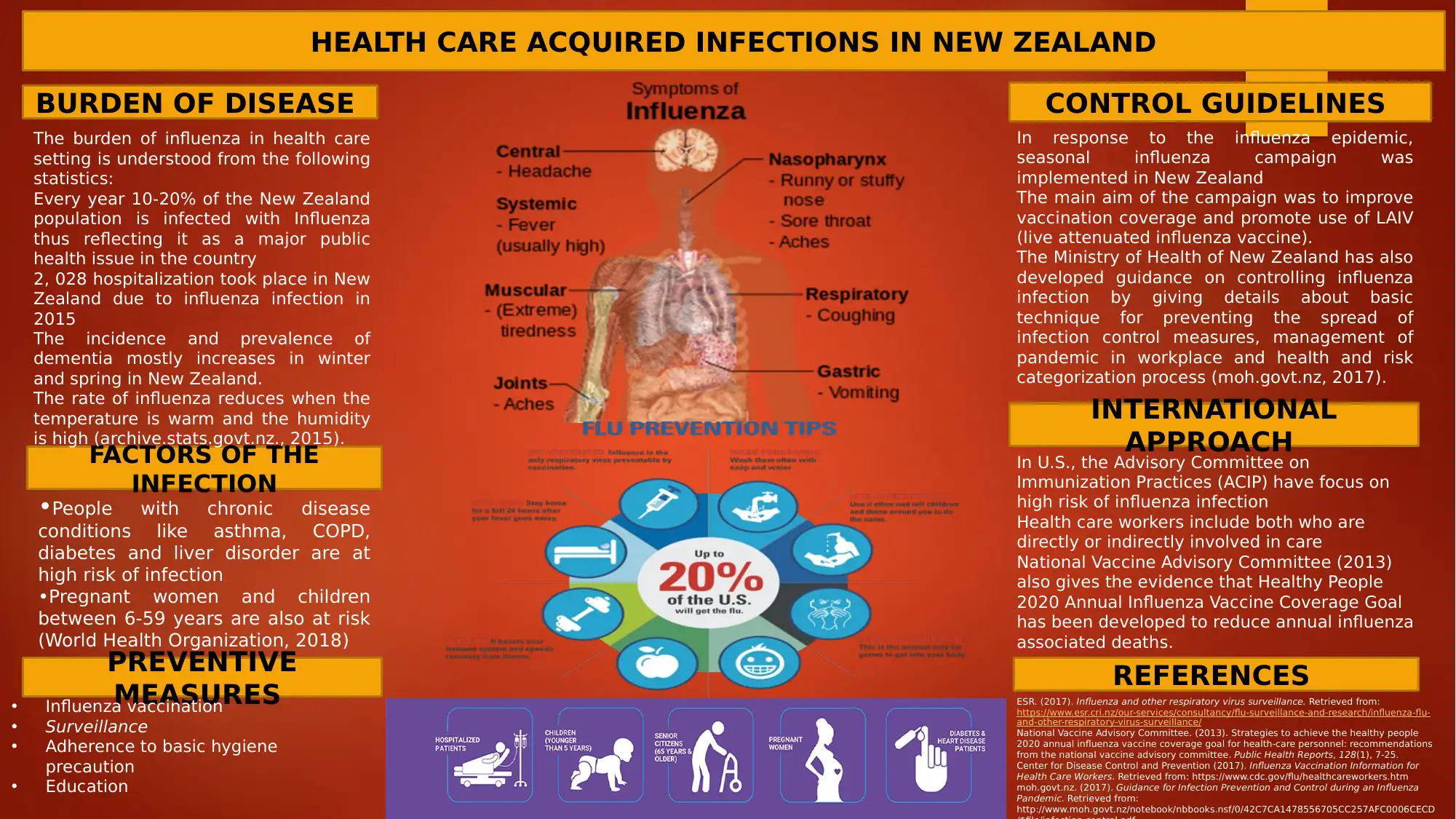New Zealand's Health Care Acquired Infections: Burden and Control
VerifiedAdded on 2023/06/01
|1
|422
|209
Report
AI Summary
This report examines the burden of health care-acquired infections in New Zealand, focusing on influenza and other respiratory viruses. It highlights the significant public health impact, citing statistics on annual infection rates and hospitalizations. The report discusses the Ministry of Health's initiatives, including vaccination campaigns and infection control guidelines. Key factors contributing to infection risk are identified, such as chronic diseases, pregnancy, and age. Preventive measures like vaccination, surveillance, and hygiene are emphasized. The report also references international approaches, particularly in the U.S., where strategies like the Advisory Committee on Immunization Practices (ACIP) and the Healthy People 2020 initiative aim to reduce influenza-related deaths. The document concludes by referencing sources from ESR, National Vaccine Advisory Committee, Center for Disease Control and Prevention and the Ministry of Health of New Zealand.







![[object Object]](/_next/static/media/star-bottom.7253800d.svg)